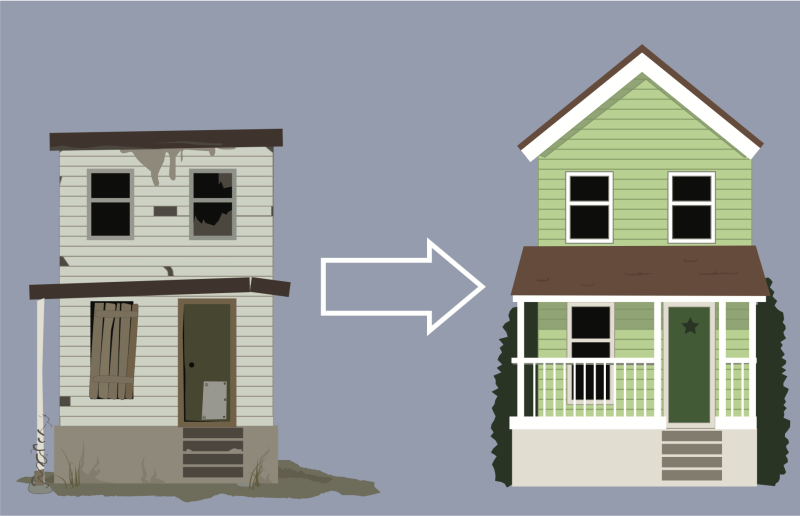
Winter Homebuying Frenzy Pushes Price Growth To Double Digits

Looming rate hikes pressure buyers to buy sooner rather than later, despite limited options.
- U.S. listing price growth renewed its momentum in December with annual pace returning to double-digit territory.
- U.S. median home listing price reached $375,000 in December, which is a 10% increase over last year and 8.6% increase over last month.
- The southern (+10.1%) and western (+8.3%) regions posted the largest annual price gains, while December prices were mainly flat in the northeast (+0.7%) and declined in the mid-west (-2.8%).
- New seller activity picked up in 10 of the largest metros, led by Memphis (+22.0%), Pittsburgh (+10.9%) and Philadelphia (+10.8%).
The housing market continues to heat up this winter as looming rate hikes pressure buyers to buy sooner rather than later, despite limited options. U.S. listing price growth renewed its momentum in December with annual pace returning to double-digit territory, according to Realtor.com’s Monthly Housing Report.
"December data offers a fitting finish to the frenzy of the past year,” said Realtor.com chief economist Danielle Hale. “Annual listing price growth hit double-digits again nationwide and in many of the hottest markets, after four months of single-digit pace this fall. Despite buyer challenges like rising prices, limited inventory and fast-paced sales, real estate activity maintained a brisk pace throughout 2021 as factors like low mortgage rates enabled home shoppers to persist. With rate hikes now on the horizon, buyers may be trying to get ahead of higher monthly housing costs, in turn driving up competition and prices.”
Buyers remained active throughout 2021 despite yearly inventory declines, while home price growth moderated slightly in November. December’s jump in the typical home’s asking price was likely driven by increased competition as home shoppers try to get ahead of mortgage rate increases. Overall, Realtor.com’s forecast expects rising affordability challenges in 2022, with an even bigger price gain for a typical 2,000 square-foot single family home.
U.S. median home listing price reached $375,000 in December, which is a 10% increase over last year and 8.6% increase over last month. Compared to 2019, listing price increased 25%. Home prices for a typical 2,000 square foot single-family home increased at an even faster pace of 18.6% year-over-year.
The share of sellers making price adjustments slipped by 0.1% in December from earlier improvements.
More than a quarter of large markets posted double-digit price gains, up by more than 20% in Las Vegas, Austin, Tampa and Orlando. However, annual home price growth was lower in the 50 largest metros, relative to the national rate, but varied significantly across the country. The southern (+10.1%) and western (+8.3%) regions posted the largest annual price gains, while December prices were mainly flat in the northeast (+0.7%) and declined in the mid-west (-2.8%).
“Our 2022 Forecast anticipates affordability challenges this year, but also that trends like rising incomes and workplace flexibility could offer some Americans a better shot at finding a home,” Hale added. “For those who weren't successful in 2021, we expect better luck in the coming months as more sellers plan to enter the market – and if December's listings are an indication, with high asking prices in mind.”
Those who are expecting better luck need to think fast though, as eager buyers drive home sales at neck-breaking speed for the 10th straight month. Time on the market remains historically low – nationally, homes sold in a median of 54 days in December, which is 11 days less than last year and 26 days less than 2019. In 50 of the nation’s largest metro areas, time on the market was even lower at an average of 48 days in December, but posted a smaller annual decline of 7 days.
The south saw December’s fastest home sales relative to 2020, dropping 9 days on average, compared to all 4 major U.S. regions. The 50 largest metros were led by Miami (-31 days), Orlando (-19 days) and Raleigh (-18 days) in regard to the biggest drop for time on the market.
As buyers continue to snatch up properties and fewer sellers enter the market, the inventory gap continues to widen. December marked the third consecutive month of bigger annual declines in the U.S. supply of active listings, ruining previous progress in recovering inventory over the summer and early fall.
However, some relief may be on the horizon, as inventory is expected to recover from 2021’s steep declines. December data shows more sellers entered the market than last year for 1 in 5 of the 50 largest U.S. metros. New seller activity picked up in 10 of the largest metros, led by Memphis (+22.0%), Pittsburgh (+10.9%) and Philadelphia (+10.8%).




